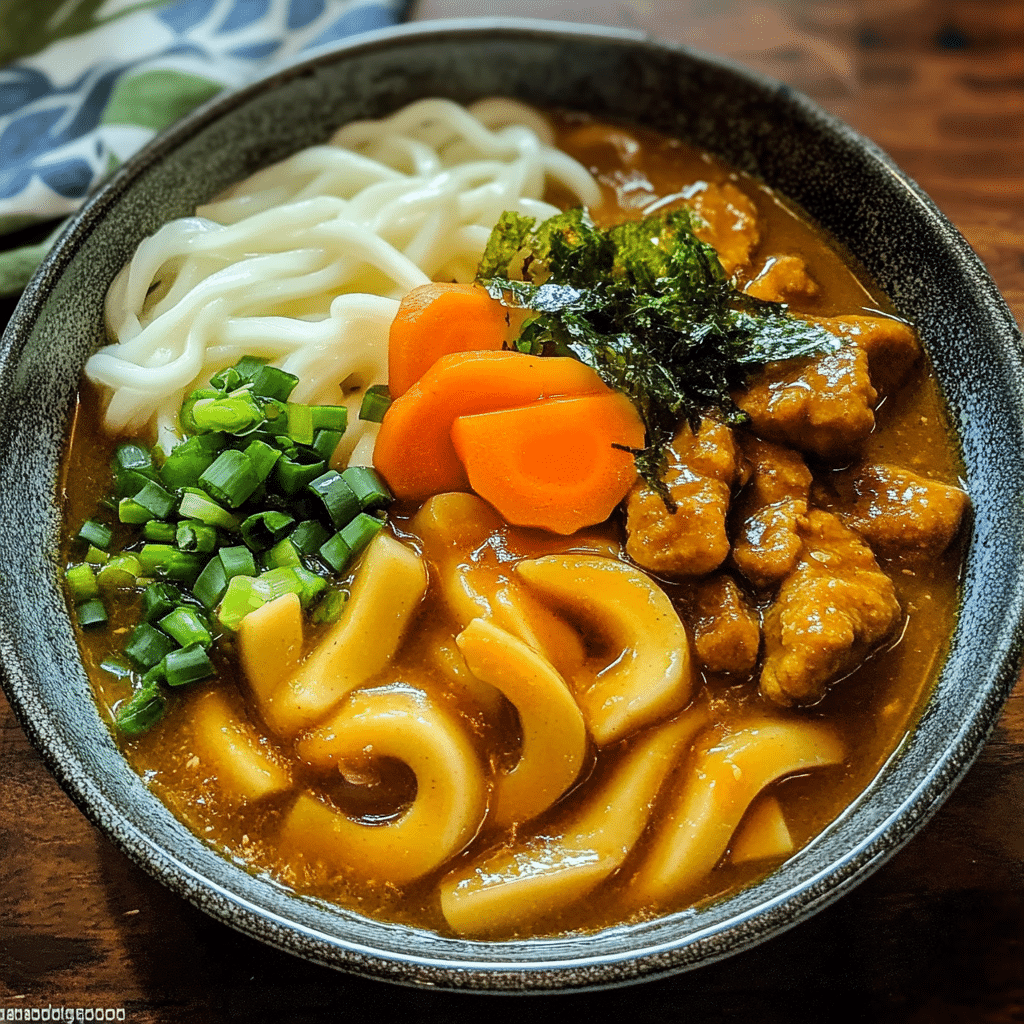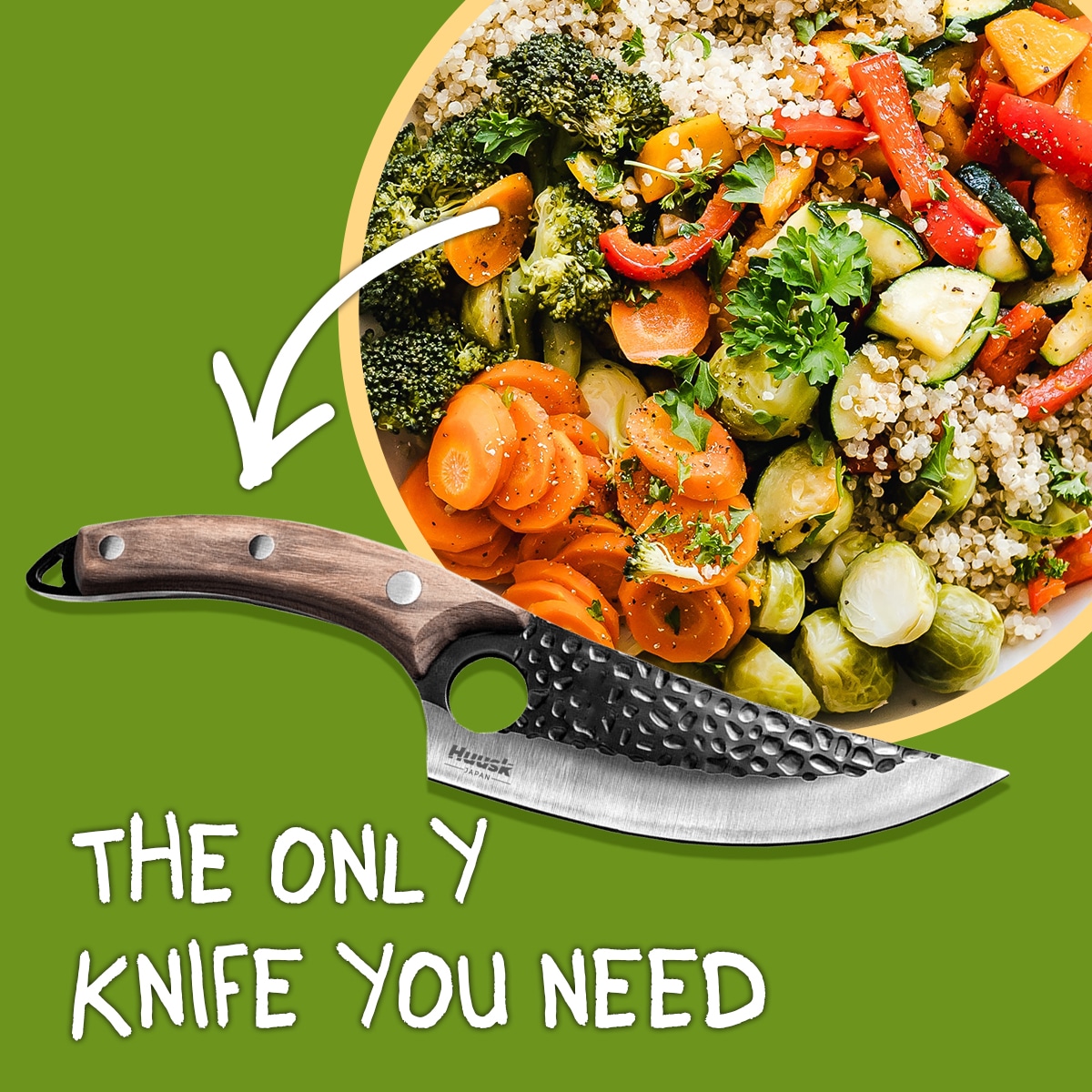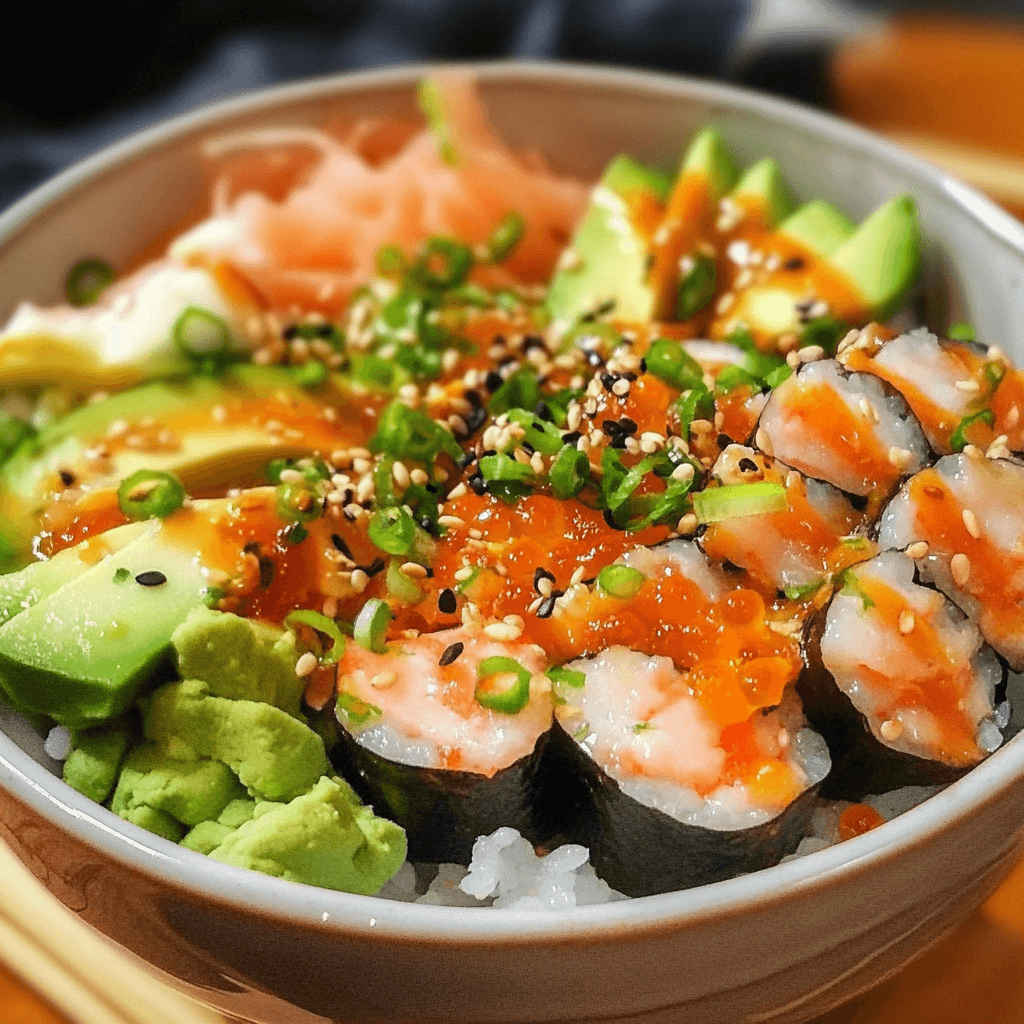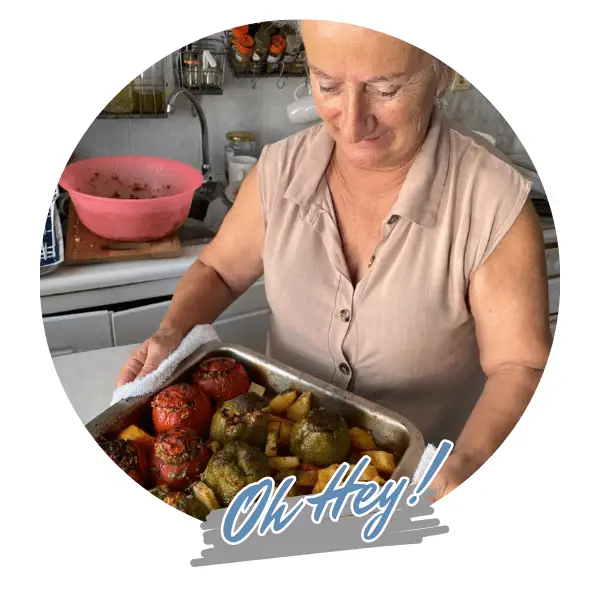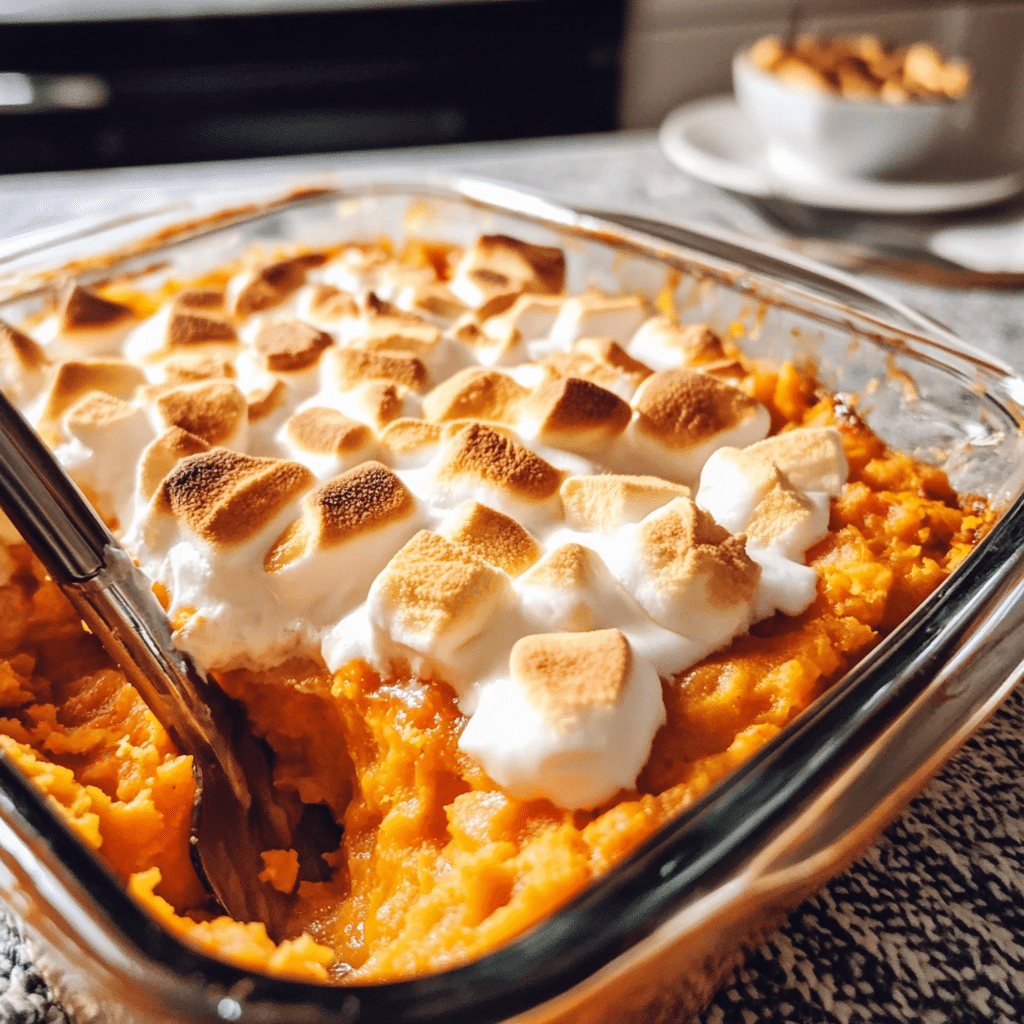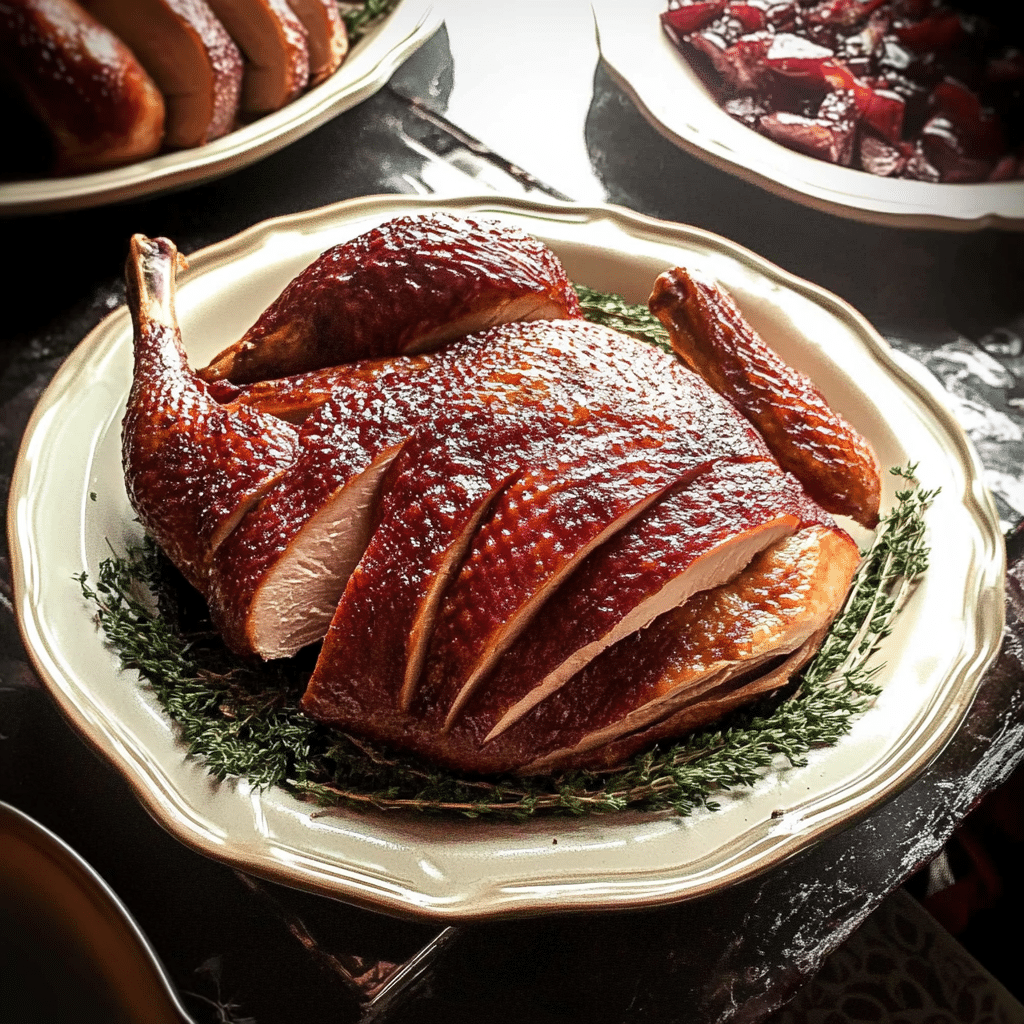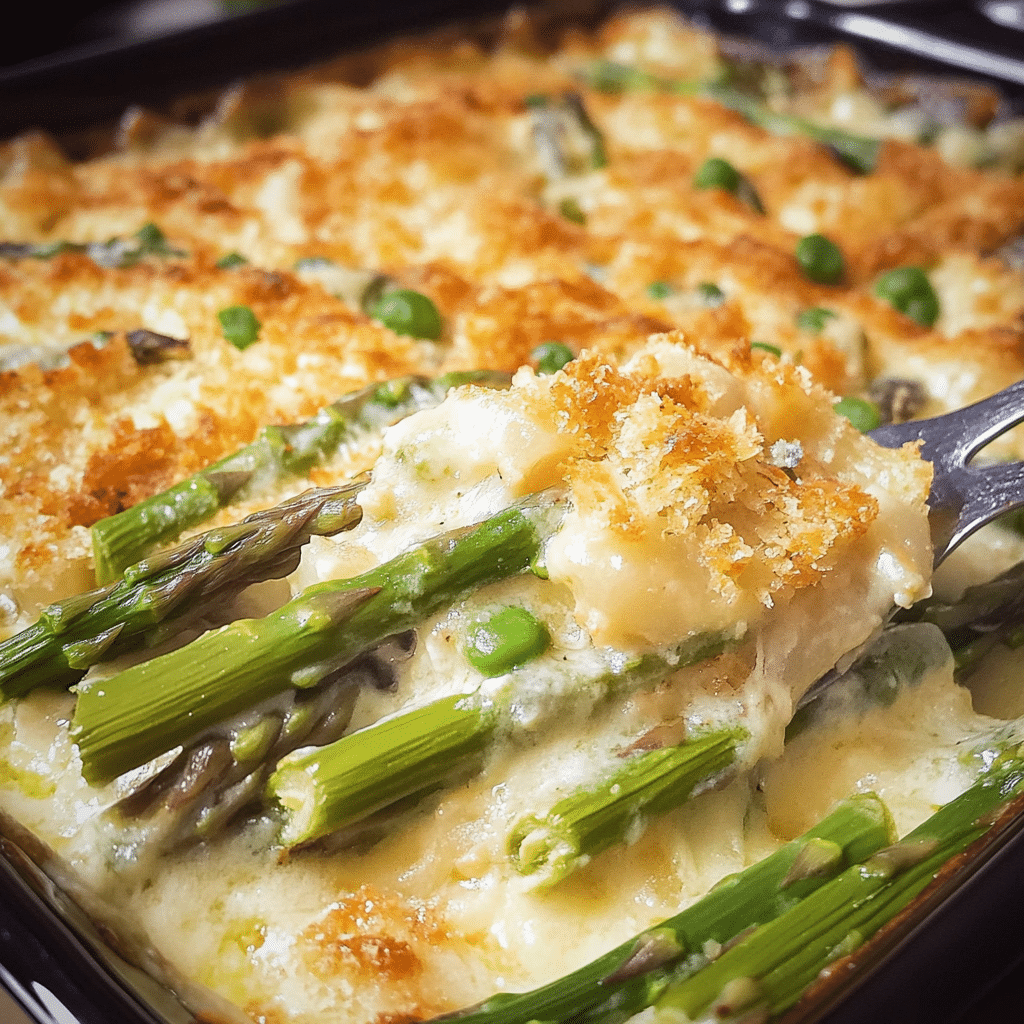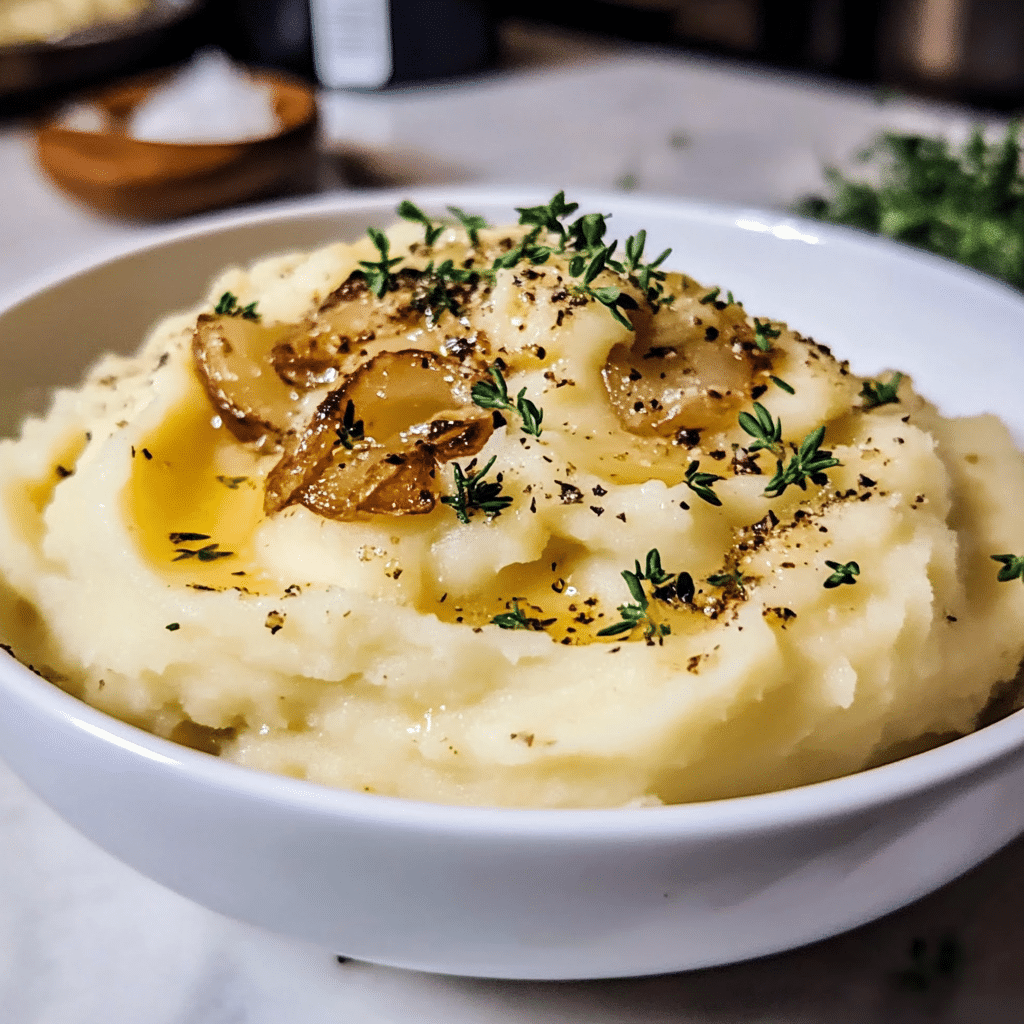Introduction
Creamed onions are one of those classic, comforting side dishes that just seem to make everything better. Whether you’re preparing for a family dinner, a holiday feast, or simply craving something rich and creamy, these onions deliver on flavor and indulgence. The soft, tender onions, bathed in a silky, savory cream sauce, bring a delightful balance to any meal, especially alongside roasted meats or mashed potatoes.
This dish might remind you of comforting, nostalgic family meals or festive gatherings. It’s easy to prepare and makes a fantastic addition to any dinner table, making it a crowd-pleaser every time. If you’ve never tried them before, creamed onions may just become your new favorite side dish
Whether it’s for a holiday gathering or a cozy dinner at home, creamed onions are a dish that brings warmth, comfort, and plenty of flavor to the table.
Why You’ll Love This Recipe
Here are some reasons why Japanese Curry Udon will quickly become one of your favorite dishes:
- Comforting and Hearty: Perfect for cold weather or when you need a warm, filling meal.
- Rich Flavors: The curry sauce adds depth and warmth, while the udon noodles bring a satisfying chewiness.
- Quick and Easy: Ready in under 30 minutes, making it a great option for busy nights.
- Customizable: Add your favorite vegetables or protein, from chicken to tofu, to make it your own.
- One-Pot Wonder: Minimal cleanup with this simple one-pot meal.
Preparation Time and Cooking Time
- Total Time: 30 minutes
- Preparation Time: 10 minutes
- Cooking Time: 20 minutes
- Servings: 4
- Calories per serving: Approximately 400-500 calories, depending on additions
- Key Nutrients: Protein: 15g, Carbohydrates: 60g, Fat: 12g, Fiber: 4g
Ingredients
Here’s what you’ll need to make this Japanese Curry Udon:
For the Curry:
- 2 tablespoons curry powder (Japanese curry powder like S&B is ideal)
- 1 tablespoon soy sauce
- 1 tablespoon miso paste (optional for extra umami)
- 1 tablespoon sugar
- 1 cup vegetable broth (or chicken broth for more flavor)
- 1 tablespoon vegetable oil
- 1 onion, finely chopped
- 2 cloves garlic, minced
- 1-inch piece of ginger, grated
- 1 large carrot, sliced thinly
- 1 medium potato, peeled and diced (optional but adds heartiness)
For the Udon:
- 4 cups water
- 4 servings of fresh udon noodles (or frozen if you prefer)
- 1 tablespoon soy sauce
- 1 teaspoon sesame oil (optional for added flavor)
Toppings (optional):
- Chopped green onions
- Soft-boiled eggs
- Shredded nori (seaweed)
- Pickled ginger
- Toasted sesame seeds
Step-by-Step Instructions
Making Japanese Curry Udon is simple and doesn’t take much time. Here’s how you can whip it up:
1. Prepare the Curry Sauce:
- Sauté the Aromatics: Heat the vegetable oil in a large pot over medium heat. Add the chopped onions and sauté for about 5 minutes, or until they turn translucent. Add the minced garlic and grated ginger, cooking for another minute until fragrant.
- Add Vegetables: Toss in the sliced carrot and diced potato (if using). Cook for another 3-4 minutes, stirring occasionally, to let the vegetables soften a bit.
- Add Curry Powder: Stir in the curry powder, soy sauce, miso paste (if using), and sugar. Mix well to coat the vegetables in the spices, and cook for 2-3 minutes, allowing the flavors to bloom.
- Add Broth: Pour in the vegetable broth, stirring to combine. Bring the mixture to a boil, then lower the heat and let it simmer for 10-15 minutes until the vegetables are tender and the sauce has thickened slightly. If you want a richer sauce, you can simmer it a bit longer.
2. Cook the Udon:
- Boil the Noodles: In a separate pot, bring 4 cups of water to a boil. Add the udon noodles and cook according to package instructions (usually about 2-3 minutes for fresh noodles). Drain and set aside.
- Season the Noodles: Once the noodles are drained, drizzle them with soy sauce and sesame oil (if using), giving them a quick toss to season evenly.
3. Combine the Curry and Udon:
- Add Noodles to Curry: Once the curry sauce is ready, add the cooked udon noodles directly into the pot with the curry sauce. Stir to combine, making sure the noodles are well-coated with the sauce. Let everything simmer together for an additional 2-3 minutes so the flavors meld.
4. Serve and Add Toppings:
- Plate the Dish: Ladle the curry udon into bowls. Top with your choice of toppings, such as chopped green onions, a soft-boiled egg, shredded nori, or a sprinkle of sesame seeds for added flavor and texture.

How to Serve
- As a Meal: Serve Japanese Curry Udon as a comforting dinner on its own, or pair it with a side of pickled vegetables for extra crunch and flavor.
- With a Side: It also goes well with a side of lightly pickled cucumber or a Japanese-style salad.
Additional Tips
- Make It Your Own: Feel free to swap out vegetables like bell peppers, zucchini, or mushrooms, depending on what you have on hand or what you prefer.
- Add Protein: For added protein, you can include cooked chicken, pork, or tofu. Just add the protein to the curry mixture and simmer to heat through.
- Adjust Spice Level: If you like more heat, consider adding a pinch of cayenne pepper or some chili flakes to the curry paste for a spicy kick.
Recipe Variations
- Vegetarian Option: Use vegetable broth and tofu or extra vegetables instead of any meat. The miso paste will add a savory umami punch.
- Spicy Curry Udon: For more spice, add more curry powder or a chopped chili pepper to the curry sauce.
- Creamy Curry Udon: Add a splash of coconut milk to the curry base for a creamy, slightly sweet flavor.
Freezing and Storage
If you have leftovers, here’s how to store them:
- Storage: Store any leftover curry udon in an airtight container in the refrigerator for up to 3 days.
- Reheating: Reheat gently on the stove, adding a little broth or water to loosen up the sauce if it thickens too much.
- Freezing: While the curry sauce can be frozen, the udon noodles might become a bit soggy after freezing. It’s best to store the curry sauce and noodles separately if you plan to freeze them.
Special Equipment
For this recipe, you don’t need any special equipment, but here are some useful tools:
- Large Pot: For making the curry sauce and cooking the noodles.
- Strainer or Colander: To drain the cooked noodles.
- Sharp Knife: For chopping vegetables and protein.
- Ladle: To serve the curry udon into bowls. A ladle helps portion out the curry sauce and noodles neatly and evenly.
- Soup Spoon: To fully enjoy the curry broth, having a deep soup spoon is perfect for sipping up the delicious, flavorful sauce.
- Tongs or Chopsticks: These are especially useful for handling and stirring the udon noodles without breaking them. Tongs can also help when transferring noodles into serving bowls.
- Potato Masher or Fork: If you want a smoother texture for the curry sauce, especially if you’re using a lot of vegetables, a potato masher or fork will help break down larger pieces and create a thick, flavorful base.
FAQ Section
Have some questions about making Japanese Curry Udon? No worries! Here are answers to some of the most common questions to help you make the best bowl of curry udon.
How should I store leftovers?
If you have leftovers, store them in an airtight container in the fridge for up to 3 days. To reheat, warm on the stove and add a little broth or water if the curry has thickened too much. For freezing, store the curry sauce and noodles separately to avoid soggy noodles.
Can I use instant curry roux for this recipe?
Yes, you can! Instant curry roux is a convenient shortcut for the curry sauce. Simply follow the instructions on the package and add it to the vegetables and broth in place of the homemade curry sauce.
What if I don’t have udon noodles?
If you can’t find udon noodles, don’t worry! You can use other types of noodles, such as soba or ramen noodles. Just keep in mind that the texture will differ slightly, but it will still be delicious.
Can I make this recipe vegan?
Absolutely! For a vegan version, use vegetable broth, and swap out any meat for tofu or extra vegetables. You can also skip the egg topping if you want to keep it fully plant-based.
How can I make the curry spicier?
If you love spice, feel free to add extra curry powder or a pinch of cayenne pepper to the curry sauce. You can also throw in a sliced chili pepper for an added kick.
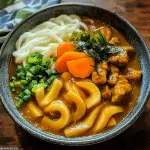
Japanese Curry Udon
- Total Time: 30 min.
Ingredients
For the Curry:
- 2 tablespoons curry powder (Japanese curry powder like S&B is ideal)
- 1 tablespoon soy sauce
- 1 tablespoon miso paste (optional for extra umami)
- 1 tablespoon sugar
- 1 cup vegetable broth (or chicken broth for more flavor)
- 1 tablespoon vegetable oil
- 1 onion, finely chopped
- 2 cloves garlic, minced
- 1-inch piece of ginger, grated
- 1 large carrot, sliced thinly
- 1 medium potato, peeled and diced (optional but adds heartiness)
For the Udon:
- 4 cups water
- 4 servings of fresh udon noodles (or frozen if you prefer)
- 1 tablespoon soy sauce
- 1 teaspoon sesame oil (optional for added flavor)
Toppings (optional):
- Chopped green onions
- Soft-boiled eggs
- Shredded nori (seaweed)
- Pickled ginger
- Toasted sesame seeds
Instructions
1. Prepare the Curry Sauce:
- Sauté the Aromatics: Heat the vegetable oil in a large pot over medium heat. Add the chopped onions and sauté for about 5 minutes, or until they turn translucent. Add the minced garlic and grated ginger, cooking for another minute until fragrant.
- Add Vegetables: Toss in the sliced carrot and diced potato (if using). Cook for another 3-4 minutes, stirring occasionally, to let the vegetables soften a bit.
- Add Curry Powder: Stir in the curry powder, soy sauce, miso paste (if using), and sugar. Mix well to coat the vegetables in the spices, and cook for 2-3 minutes, allowing the flavors to bloom.
- Add Broth: Pour in the vegetable broth, stirring to combine. Bring the mixture to a boil, then lower the heat and let it simmer for 10-15 minutes until the vegetables are tender and the sauce has thickened slightly. If you want a richer sauce, you can simmer it a bit longer.
2. Cook the Udon:
- Boil the Noodles: In a separate pot, bring 4 cups of water to a boil. Add the udon noodles and cook according to package instructions (usually about 2-3 minutes for fresh noodles). Drain and set aside.
- Season the Noodles: Once the noodles are drained, drizzle them with soy sauce and sesame oil (if using), giving them a quick toss to season evenly.
3. Combine the Curry and Udon:
- Add Noodles to Curry: Once the curry sauce is ready, add the cooked udon noodles directly into the pot with the curry sauce. Stir to combine, making sure the noodles are well-coated with the sauce. Let everything simmer together for an additional 2-3 minutes so the flavors meld.
4. Serve and Add Toppings:
- Plate the Dish: Ladle the curry udon into bowls. Top with your choice of toppings, such as chopped green onions, a soft-boiled egg, shredded nori, or a sprinkle of sesame seeds for added flavor and texture.
- Prep Time: 10 min.
- Cook Time: 20 min.
Nutrition
- Serving Size: 4 servings
- Calories: 400-500 calories, depending on additions
- Fat: 12g
- Carbohydrates: 60g
- Fiber: 4g
- Protein: 15g
Conclusion
Japanese Curry Udon is the ultimate cozy comfort food, combining hearty, tender udon noodles with a rich and flavorful curry broth that’s perfect for warming up on chilly nights. The smooth, slightly spicy curry sauce envelops each noodle, giving every bite a burst of flavor. Plus, it’s a breeze to make with a handful of ingredients, making it an easy weeknight dinner option that doesn’t skimp on taste.
Whether you’re making it to unwind after a long day or to treat yourself to something satisfying, this dish offers the best of both worlds: comforting noodles and a rich, savory curry that you’ll crave again and again.
Don’t forget to snap a photo and tag me on social media – I love seeing your delicious creations!

